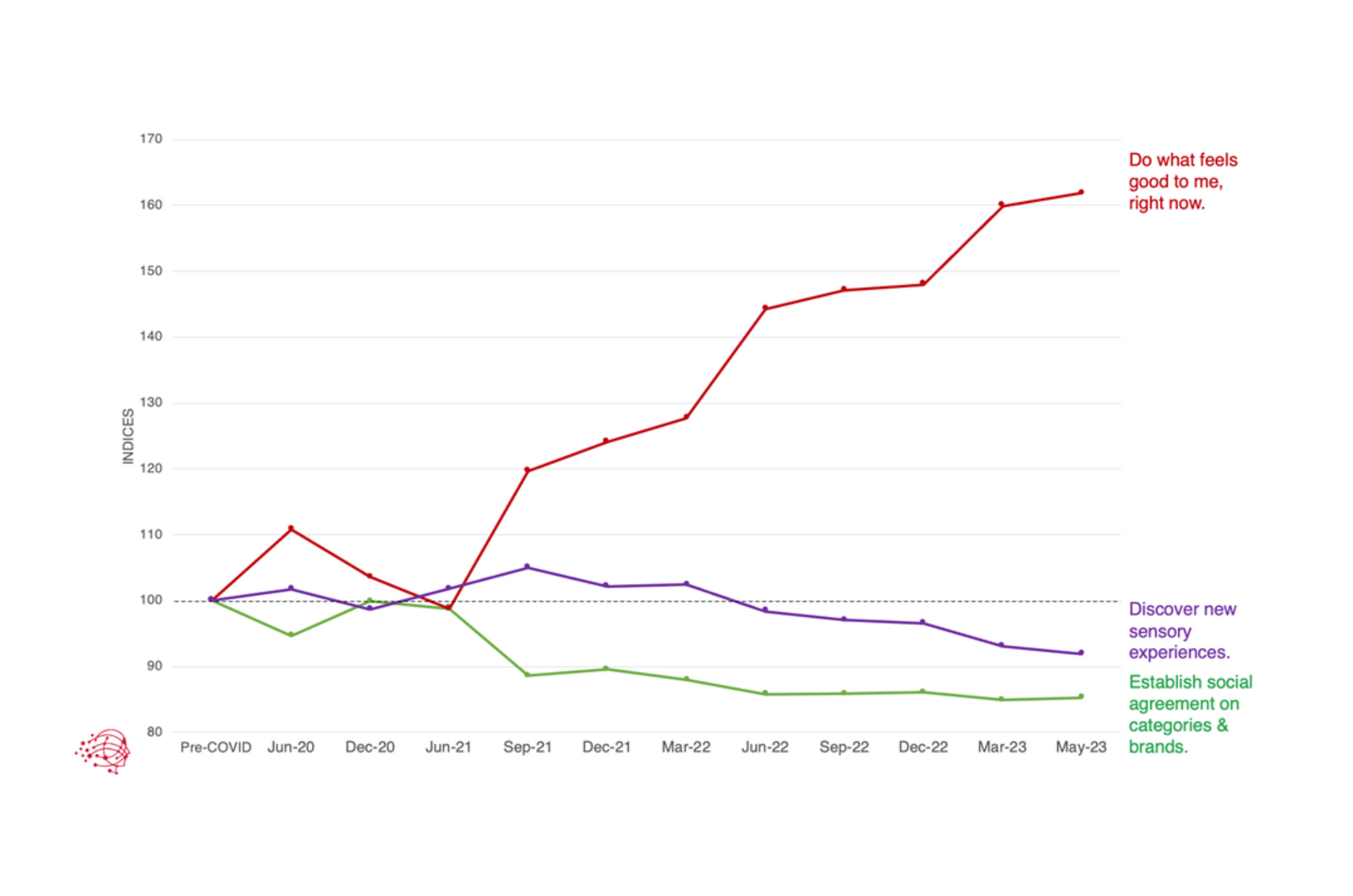Decoding the zeitgeist of purchase decisions
Culturally, we’re in a decidedly teenage era. So why do consumers behave in specific ways and buy certain product categories and brands?

Picture a group of young children. As they start in life and through their early years, they assimilate. They strive to talk, act, and socialise like their parents. They rely on their parents’ protection and would have trouble surviving without the constructs and established practices of the household.
They seek to belong.
Eventually, this group of kids transitions into the teenage years. All that safety, assimilation, and honouring of tribal norms are out the window. They seek to do anything BUT talk, act, or socialise like their parents. They consume what they want, when they want, and appear to plan roughly 6 seconds into the future.
They seek to rebel.
This gives way to the young adult or university years. The rebellion is quelled, replaced by exploration and discovery. They seek to understand their options in life and where they might fit in the world.
They seek to discover.
As this group of now-adults transition beyond the exploratory days on campus or in their first jobs, they’re back out in the real world. They look to the conventions of peers in their same situation to guide the way. They share the discoveries made with others and collectively adopt the most worthwhile (from bubble tea to social media platforms).
Once again, they seek to belong.
These three forces, modelled and studied by neuroscientist T. Sigi Hale, PhD, relate to the deep human biological compulsion to be both socially integrated/connected and the opposing compulsion to be individually unique and independent.
And these forces go well beyond life stage experiences to help explain the zeitgeist of culture at a given time. This lets us understand what’s driving and stressing a society – and why consumers behave in certain ways and buy certain product categories and brands as a result.
Culturally, we’re in a decidedly teenage era.
Hale and the team have been tracking the impact of these psychological forces for years. Above is a table for U.S. gen pop, beginning with a historical benchmark, which essentially creates an index norm for the pre-COVID period. Tracking these three forces from 2020 to the present and indexing against the historical norm, the data speaks for itself…
The ‘Rebel’ force is strongly shaping the zeitgeist consumers experience. This force is particularly pronounced among younger consumers, the Gen Z most every marketer covets. And, just as with the teen years of our group of kids described above, it’s having a cathartic impact on emotional tension, behaviour, and purchase choices.
It’s no surprise to any citizen of Earth that the last several years have been… intense. The past few years have been particularly stressful. And I don’t mean project-deadline-at-work stress; I mean societal stressors that create the kind of ambient pressure that shapes cultural cycles. In short, things have really sucked, and people are reacting at the cultural level.
And yet, people manage to live productive, reasonably happy lives. How? By doing things that reward them with just a bit of perceived control over their situations and outcomes.
Categories like soft drinks, snacks, and quick-serve restaurants are thriving as they empower consumers to rebel in the form of something that helps them feel better right now. I can’t control the economy, but a trip through the drive-thru can sure provide some feel-good benefits for the next 20 minutes!
The cultural ‘teen years’ are raging, and categories and brands that provide for that instinctual compulsion to blow off steam will continue to thrive.
Eventually, this cultural phase will give way to an exploratory cycle. We’ll seek to find new conventions and explore “the best way” to do things based on the pursuit of new experiences. The red line above will creep back towards the baseline, and the purple line will slope upwards.
As our cultures establish new norms and conventions based on this exploration, we’ll once again tribalise, honour the new conventions, and otherwise ‘Belong.’ But for the time being, it’s record-high ‘Rebel’ compulsion.
So what? What can brand practitioners DO to activate this insight to their advantage? Let’s consider two scenarios:
Scenario 1: You’re winning
Your brand is thriving, growing, and riding this wave. In that case, beware that a key challenge with this mindset is that it is fickle. Loyalty will be challenged, as the consumer is as loyal as their best option. To combat this, ensure that your activation and promotions provide ongoing opportunities to win – contests, access to exclusive online content, etc.
Scenario 2: You’re struggling
It could be that your category is misaligned with this zeitgeist, which is easy to see for categories like laundry detergent or baby food. This could also be due to too much focus on rational, practical considerations – the most obvious of which lately is focusing too heavily on mere price.
Remember that consumers are generally looking for emotional relief and a bit of escapism. Focus on experience; resist the rational, price-forward obsession and elevate ‘the feels’ – even something as functional as doing your taxes can leverage this insight, as TurboTax has with its “Don’t do your taxes” campaign.
Look for opportunities within your omni-channel activation to inject a bit of fun and rebellion – what if a digital promotion could create a shopping treasure hunt or other gamified ways to make the mundane less so?
And plan for the shift to a discovery phase in the cultural zeitgeist as we evolve past this teenage-like era. After all, anyone who’s lived with a teenager knows it’s not easy – but it helps when it is at least predictable.
Hunter Thurman
President at Alpha-DiverHunter Thurman is president of Alpha-Diver, the market research & consulting firm that applies neuroscience to more deeply understand marketplace behavior. The firm’s neuroscientists and strategists work with leading brands, retailers and the Wall Street analyst community to explain consumer behavior in ways proven to help clients drive double-digit brand growth via activation.


